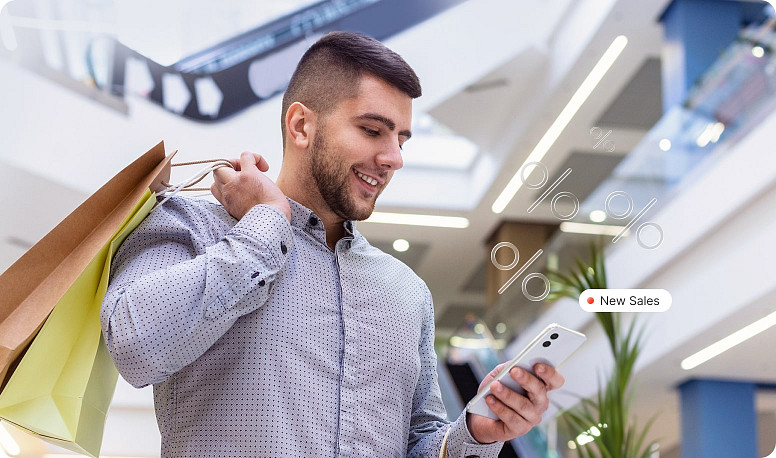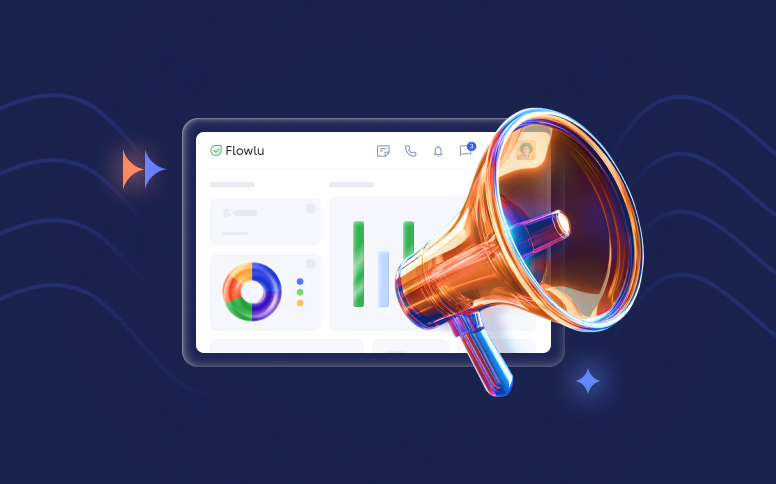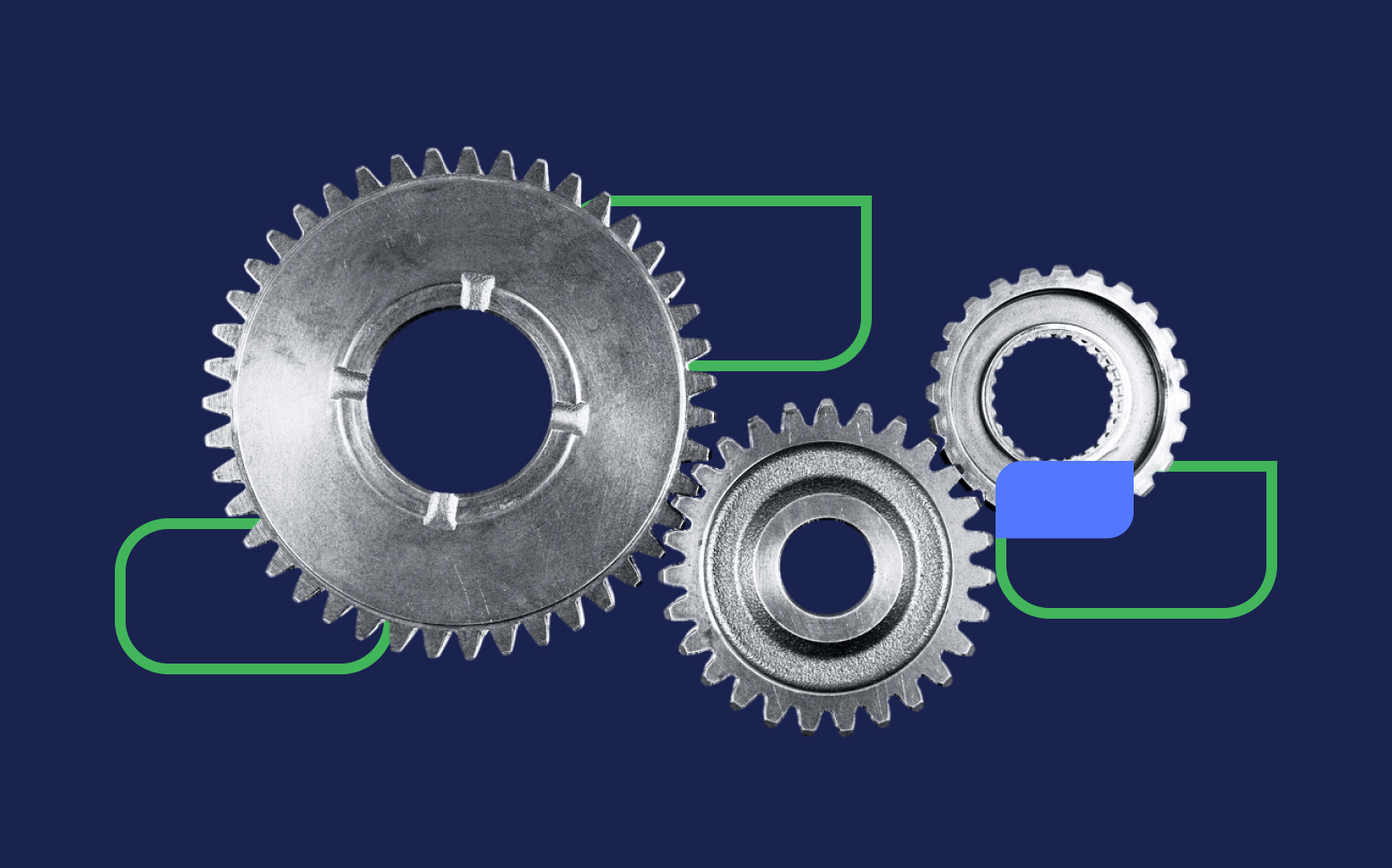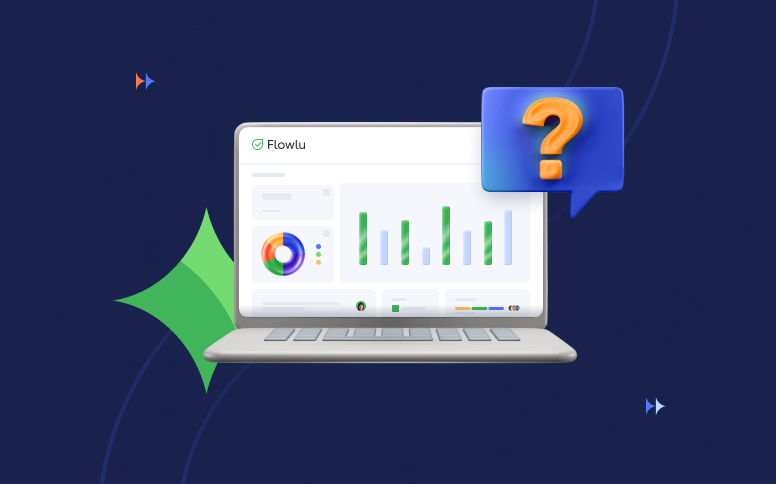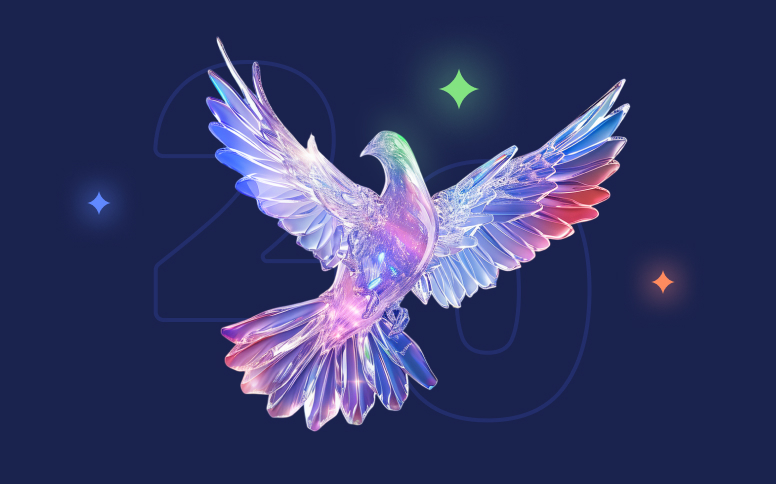Building Customer Loyalty That Lasts: How to Create and Improve Long-Term Relationships
In this article, we’ll explore ways to improve customer loyalty and build stronger relationships with your clients, from soliciting feedback and implementing needed changes to engaging with the local community and maintaining brand values.
What is Customer Loyalty?
The term describes the commitment of a consumer to a particular business. It happens when customers enjoy their experience, like the products they buy, and feel connected to the brand. Loyal customers are more inclined to stick with a business and recommend it to others.
Let’s examine the key benefits of customer loyalty:
- Repeat purchases: Loyal customers prefer to spend their money on products or services from the same business rather than looking elsewhere.
- Emotional connection: Outstanding customer service and reliable quality nurture an emotional bond between the client and the brand, which encourages customer loyalty.
- Advocacy: Loyal customers are more likely to tell about their positive experiences with the company to their colleagues, friends and family members, resulting in the acquisition of new clients.
- Price insensitivity: Compared to new customers, loyal clients are often ready to pay more for goods and services they value and trust. This indicates that they’re less susceptible to making decisions based on price fluctuations.
- Feedback and cooperation: By receiving feedback from loyal customers about their experiences, businesses can enhance their products. Clients may also be willing to cooperate with the company to discover unique solutions.
Essentially, customer loyalty means that your business will be the top pick when looking to purchase goods or services. Taking the aforementioned benefits into consideration, we will explore the ways to increase customer loyalty.
7 Proven Ways to Build Customer Loyalty
A business that is successful depends on a wide range of strategies to maintain customer loyalty. In order to increase the number of new customers and retain the current ones, it is advisable to employ a combination of customer loyalty techniques to cultivate meaningful relationships.
Here’s our comprehensive guide on the most effective strategies to build customer loyalty.
#1: Personalize Experiences Through Data
What builds customer loyalty really well is hiding behind the term “personalization”. It is an important element in cultivating a strong emotional bond between consumers and a company. When experiences are customized to meet specific needs, clients feel valued and appreciated.
To improve customer loyalty, you should establish a personal connection with your clients. In other words, it is necessary to learn their first, last, and middle names as well as their honorifics, discover their biographies and analyze purchasing habits. This implies that you have to gather information on your contacts, which might be challenging.
A modern way to generate customer loyalty is by using a customer relationship management system. CRMs like Flowlu can help you gather and keep track of crucial customer information, such as transaction histories, purchasing patterns, customer care records, in one central location. You can gain a deeper understanding of your clientele and personalize their experiences to give them what they desire.
After collecting this data, you could offer a consumer a fantastic bargain together with a personalized birthday message. Services like Mailchimp or Constant Contact enable businesses to automatically send customized emails to customers. However, there is much more to personalization than just adding your client’s name to an email template that you send out to all of your contacts.
How to develop customer loyalty further? Tailored experiences show your clear understanding of the client’s objectives and areas of concern. This means you have to personalize product or service suggestions to an individual's past behavior and preferences. Relevant recommendations will result in purchases, as they align with the exact interests and needs of a loyal client.
It is also important to create a more engaging target experience. If customers are engrossed in the product, they’re bound to continue their journey with the company when new features are released.
Offering relevant product or service recommendations is an indispensable part of an effective customer loyalty marketing strategy. It involves using a variety of data sources to offer tailored suggestions, which positions it as one of the most reliable ways of creating customer loyalty.
#2: Be Open to Communication at All Times
The digital environment plays an important role in maintaining customer loyalty. People go online to check social media, send emails to friends and colleagues, purchase items via marketplaces, and so on. This setting is ideal for regularly interacting with your customers.
To be always in reach of your clients, it is advisable to keep multiple lines of communication open at all times. The first step is to build a website filled with pertinent information, such as descriptions of goods or services and contact details for customer support team members.
Creating profiles on social media is a sure way to attract customers' attention and maintain contact. You can publish educational posts on your website and promote them on your social media accounts. Loyal customers may follow your pages to receive notifications when you run promotions, special deals, or limited time offers.
The advent of the Internet revolutionized how people communicate. It no longer takes months just to send or receive messages. The process is almost instantaneous. This is why customers tend to feel abandoned when the business they’ve purchased from does not have an active online presence.
Online communication with clients makes them aware that they’re valued and a part of the business. Invite customers to speak with you directly on social media about any concerns and ask questions. Tools like Hootsuite, Statusbrew or Sprinklr are invaluable for managing the social media presence across multiple accounts. Similarly, streamline customer interactions and boost engagement by implementing AI customer support chatbots.
How to build customer loyalty in marketing? Frequently publish posts on relevant topics on your website to educate your clients and expand their expertise. Develop an email marketing strategy to send automated emails, retargeting ads, test campaign invitations, and more.
#3: Solicit Feedback and Gather Insights
The best way of how to achieve customer loyalty is to understand what your client needs, what issues they encounter, what features are present or lacking in your product or service. Therefore, it is essential that you employ various techniques for soliciting feedback.
Leaving feedback should be as easy as possible. To facilitate this, you can use short, mobile-friendly surveys with straightforward questions. There has to be a large selection of feedback channels like email, customer support line, chat, and social media. Incorporating emoji reactions and rating scales can help speed up responses.
To maximize efficiency, collect feedback at key touchpoints. Sending post-purchase surveys is incredibly useful for assessing product satisfaction. You can also follow up after support interactions. Another option is to invite loyal customers to take part in usability testing when launching new products or features.
Incentives serve to persuade customers to complete a survey. They could come in the form of discounts, coupons, or entry into a giveaway. Customers may be willing to share personal experiences if they are rewarded with a free trial or product upgrade.
Monitoring social media and review aggregators is an alternative route for collecting feedback. You can set up Google Alerts for your brand name to track mentions and respond promptly to both positive and negative reviews. The collected data will help you identify common themes and issues.
Since personalization is paramount to managing customer loyalty, you should segment customers and tailor surveys based on their type, purchase history, or support interactions. To get more detailed feedback, reach out to your most engaged customers.
How to increase customer loyalty? Solicit feedback to communicate to customers that their opinions matter. Promptly acknowledging feedback reinforces the message that their input is appreciated. As a result, clients feel empowered to influence products and services. This can lead to increased loyalty as customers believe they have a stake in the company’s success.
Once your company has accumulated enough information, it is time to put it to good use and implement the changes your customers need. But first, you have to sort feedback into categories like product quality, customer service, delivery issues, or usability, for example. This will aid you in identifying common themes.
Prioritize issues that have a big impact on your brand or a major portion of your consumer base. Then, evaluate the input according to how it affects customer satisfaction and your specific business objectives. If you want to understand the underlying causes of negative feedback, go beyond surface-level issues and carry out root cause analysis.
A huge part of developing action plans is setting actionable objectives that are derived from acquired feedback. For instance, if customers are unsatisfied with usability, set an objective to conduct usability testing and invite them to participate in the process.
When it comes to implementing changes, make sure that there’s a structured plan for rolling them out. It is imperative that both customers and employees are informed. Transparency helps to manage expectations and shows that you value customer feedback.
After successfully implementing changes, do not forget about communicating the positive outcomes to your customers. This reinforces that their feedback has led to tangible improvements and bolsters customer loyalty.
#4: Measure Customer Satisfaction
Despite being distinct concepts, customer loyalty and customer satisfaction work in tandem to measure how well your company meets customers’ demands. Tracking customer happiness may be done in a number of ways, with different tools and methodologies offering unique metrics. Let’s break down key methods:
Surveys: Send out short CSAT surveys and ask customers to rate their satisfaction with a particular aspect of your service or product. Conduct NPS surveys to measure customer loyalty by asking a single question: “On a scale of 0 to 10, how likely are you to recommend our business to a friend or colleague?”. Gauge how much effort a customer has to exert to get an issue resolved. To streamline the process of collecting and analyzing customer feedback, consider investing in best NPS survey tools that offer advanced features for data collection, analysis, and reporting.
Customer feedback forms: Email a feedback form to customers to get their first impressions, either when they make a purchase or engage with your support team. These forms frequently include specific questions regarding the most recent experience. You may also embed the form in a webpage.
Social media monitoring and engagement: Use specialized tools to monitor mentions of your business across social media platforms and analyze sentiments. Engage directly with customers—reply to comments and messages, and ask for opinions or suggestions.
Customer interviews and focus groups: How can a business develop customer loyalty? Perform one-on-one interviews with customers to learn about their experiences and expectations. Organize focus groups with a representative sample of your customer base.
Customer churn and retention rates: Compute the percentage of customers who stop using your product or service over a specific period of time. Measure the percentage of customers who continue to use it.
By using a mix of these techniques on a regular basis, you can get a complete picture of client satisfaction. Analyzing the obtained data allows you to spot patterns, gauge the effectiveness of changes, and promote enhancements to customer experience.
#5: Get Involved in Local Community
A business needs to have a strong presence in the local community to attract customers who share its values. How to enhance customer loyalty through community involvement?
Charity efforts don’t always have to focus on saving obscure landmarks from being demolished, putting out fires in South America, or ending world hunger. Strategic decisions are necessary, commit only to those ideas that will enable your business to build meaningful relationships with clients in the local area.
You can host charity runs for local nonprofits in your store parking lot or organize food drives for homeless shelters. By taking part in these initiatives, you can encourage loyalty and turn customers into passionate advocates for your brand. Don’t forget to keep a schedule. Use Flowlu’s Calendar App to plan events, receive reminders, and share timetables.
Companies across various economic sectors can increase the loyalty of their customers by actively participating in the life of the community. Here are some examples:
Retail store: How to build customer loyalty in retail? Host events like art and craft shows, book signings, charity auctions, seasonal festivals, etc. Working with nearby schools or local nonprofits to arrange fundraising or donation events creates a powerful community presence.
Restaurant or cafe: Commit specific days to support local charities, donating a portion of proceeds, for example. Offer free or inexpensive cooking classes or workshops to engage customers and provide value to the community.
Health and wellness center: The best way to ingratiate your company with the community is to provide health screenings or wellness workshops free of charge. Health initiatives launched in partnership with local nonprofits can further solidify the connection.
Tech company: Free coding classes for kids or online seminars on digital literacy for adults have a positive impact on perception of your business. To strengthen ties with the entrepreneurs, give sponsorships or mentor help to local startups and tech incubators.
Through their active involvement in the community, businesses can establish strong relationships, improve the perception of their brand, and finally develop customer loyalty.
#6: Consistently Communicate Your Brand Values
What creates customer loyalty? Brand values form the foundation of a company and directly influence the public opinion. They determine the identity of your brand, its message, and even personality. It is crucial to understand how the brand values work if you want your customers to spend their money on your products. Let’s briefly examine some aspects:
- Building trust: How can a company build customer loyalty? Consistent brand messaging is key. Company builds trust by communicating its core values and delivering on its promises. As a result, customers feel more confident in their purchasing decisions.
- Emotional bonding: Familiar branding fosters emotional connections with customers. When the messaging resonates with the audience, it evokes positive emotions, which enhance customer loyalty.
- Memorability: Homogenous brand experiences enable customers to easily remember the business. This is essential in a competitive market, as it helps companies stand out from competitors and remain in the minds of consumers.
Maintaining consistent brand values allows your business to gain customers’ trust, nurture meaningful emotional connections to all products under the same brand, and finally become the first choice when it comes to seeking to purchase goods or services.
#7: Design Effective Loyalty Programs
If you ever wondered how to maintain customer loyalty over the long term, look no further, designing an effective loyalty program is the way to do it. Creating a loyalty program will help you to retain existing customers as well as attract past clients. There several mechanisms you can use to build one:
- Points system: Customers who accumulate points with each purchase from your company will feel a sense of progression and satisfaction. The possibility to exchange these points for various benefits like free items, exclusive deals, or simple discounts encourages repeat purchases as, according to recent stats, 66% of shoppers make impulse buys because coupons were available.
- Rewards in tiers: Hierarchical approach to distributing rewards helps categorize clients based on the amount of interactions with products or the number of purchases.
- Catalogs of rewards: Loyalty programs frequently present a selection of incentives on a customer portal or in a catalog. This allows customers to choose what they want, adding a personal touch to their interaction with the business.
- Coupons and vouchers: Incorporating coupons or vouchers into your loyalty program means your customers will get instant satisfaction. The immediate effect of redeeming is an experience that is both exciting and long-lasting.
- Referrals: How do you improve customer loyalty? Company that is incentivizing current customers to recommend its business to friends and family members has a good chance of growing its client base.
- Gamification: Customers are inspired to participate in the life of a product or service by completing fun quizzes, acquiring badges, or reaching milestones. The interactive nature of this approach deepens their bond with the brand.
How to improve customer loyalty programs by leveraging specialized software? Different platforms, such as LoyaltyLion or Smile.io, provide businesses with the capabilities to create and manage loyalty programs. These platforms often have features such as accumulating points, rewards in tiers, and referral marketing elements.
Real-World Examples for Increasing Customer Loyalty
It’s clear when a business is doing a good job of creating customer loyalty because happy customers are the first to write rave reviews and purchase new products or services. Let’s look at three building customer loyalty examples to learn what makes these companies stand out in the current marketplace.
TikTok
How does a platform reinvent social media? By turning the concept on its head, while at the same time going back to a familiar principle – the possibility to go viral with little effort.
TikTok is not a product of a brainstorming session in Silicon Valley. It’s the idea of a Chinese citizen named Zhang Yiming. While tech companies got caught up in maximizing reach, through subscribers and followers, this platform features an algorithm that prizes content. As a consequence, it drives meme culture, giving young audiences a place to express themselves. Simultaneously, it empowers brands to encourage customer loyalty.
The platform attracts users in numerous ways. First of all, it is simply easy to use. Compared to Instagram or Snapchat, users can edit and upload content with less hassle. You don’t even have to have a PC or MAC, as everything can be done on a smartphone.
The focus on the younger generation of users is another advantage for TikTok. The appeal to short attention span coupled with the comedy angle makes the product incredibly accessible. Lastly, reliance on advanced AI algorithms streamlines the process of learning user preferences and presenting customized video feeds.
Key takeaway:
How to gain customer loyalty in the modern digital landscape? Develop your product by taking advantage of existing principles, while actively integrating new technologies to ensure accessibility for younger audiences. As a result, you will gain entire generations of loyal customers.
Hyundai
Customer loyalty can be gained on all continents: a Hyundai success story.
Despite entering the automotive industry in another part of the world, Hyundai has become one of the top sellers of cars in the United States. This has everything to do with changing the image of the company, from a manufacturer of affordable automobiles to a leader in designing technologically advanced cars for Americans.
Hyundai came into the US market in the mid 80s with a model designed and manufactured in Korea. The car was considered dumpy, and did not have enough room for the average American. Thanks to low maintenance costs, sales were high.
With the introduction of American-designed cars and powerful engines, the public perception started to change and customers began to relate more to the product. This transformation enabled the company to bring good profits to its owners and dealer partners. The consequence of this is the fact that Hyundai is one of the fastest growing brands in the United States.
Key takeaway:
How do you create customer loyalty in a new country? If you want to expand your business, try to reimagine your brand, put efforts into localization of everything from business practices to designing your products.
Domino’s
Who would expect seeing a pizza company alongside titans of technological innovation? Apple, Amazon, Domino’s. The answer becomes obvious once you learn that the rankings in question are based on customer loyalty data.
This popular pizza company has been active for the last 60 years and is considered by many to be the biggest pizza chain in the United States ranked by sales. Domino’s invested a lot of efforts into their customer loyalty program and it shows their dedication to create inspired solutions.
For decades, Domino’s has been a go-to for pizza lovers across all walks of life, transforming late-night cravings and family gatherings into celebrations of senses. The thrill of opening that iconic box is a moment filled with excitement.
How to keep customer loyalty in a competitive market? Beyond the quality of their ingredients, the company draws inspiration from a sense of convenience. While eating pizza is inherently comforting, waiting for the delivery to arrive can sour the mood.
The company relies on a so-called fortressing approach, which involves opening additional stores to shorten delivery times. With more than 6 thousand locations in the US, you’re sure to find a restaurant in your area. That is why their service is fast, not only to bring you comfort but to do so faster than competitors.
Key takeaway:
How do you achieve customer loyalty so that clients will choose you over competitors? Spend time and money to establish an effective system for delivering your products or services in the shortest amount of time. This will make your customers come back for more, all the time.
Conclusion
To cut a long story short, marketing strategies to increase customer loyalty are quite diverse and you cannot rely only on one to build a successful business.
How to create customer loyalty? Tailoring the experience for your target audience by collecting data and acting upon it to present appealing recommendations is one of the most useful ways to create customer loyalty.
A company must strive to become more open to their customers through active communication on social media and other channels.
Soliciting feedback is key to knowing what issues your product or service has, and measuring customer satisfaction is crucial for obtaining a bigger picture of client experience.
Engage with the local community and show your brand values to boost your reputation. If you’re asking yourself, “How to retain customer loyalty?” A good idea is to develop loyalty programs.
All of these customer loyalty strategies are nearly impossible to put into practice without technology. Not only there is a wide range of such solutions, but each one greatly minimizes the costs it takes to achieve desired results.
As you reflect on how to establish customer loyalty, consider building upon your existing strategies and improving them with new elements. Try asking simple questions: Are you actively seeking their feedback? Do you talk to them on social media? Is there a loyalty program in place?
It is never too late to explore and enact strategies for maintaining customer loyalty. Perhaps you could create more accounts on popular social media platforms, or leverage customer relationship management systems to keep an eye on your client’s behavior.
Remember, fostering meaningful relationships with customers takes time. Always be on the lookout for how to improve customer loyalty. Consider trying a CRM system like Flowlu to collect customer data, create portals to share information, use email templates and send messages to your clients.
Fostering customer loyalty is a continuous process that requires the use of different strategies to increase customer loyalty, including personalization, communication, community engagement, soliciting and acting on feedback, and of course incorporating technology into your business practices.
To gain customer loyalty, you have to earn their trust first. Trust is the key factor when it comes to making purchasing decisions. Building trust involves showcasing and upholding values such as empathy, integrity, reliability. It is an ongoing process, and it takes time and effort.
There are a number of ways to reward your loyal customers. These options include:
- Engaging on social media to get feedback
- Making highly personalized offers
- Designing a flexible reward system
- Giving away items for free
- Incentivizing recommendations of the business to friends and family
Customer loyalty can be expressed in different forms and settings. Let’s review the most common methods:
- Surveys: Utilize metrics like Customer Satisfaction Score, Net Promoter Score, Customer Retention Rate and Customer Lifetime Value.
- Customer feedback forms: Send feedback forms to customers to learn about their experience.
- Social media: Engage with customers and collect feedback.
- Interviews and focus groups: Talk to the individual or groups of customers to gather information on their negative or positive experiences.
- Churn and retention rates: Measure data points to learn the percentage of customers who stay with the company or leave.
The question of how do you maintain customer loyalty can be answered by looking at special indicators. Primary markers of customer loyalty:
- Repeat purchases
- Positive feedback
- Referral rates
- Increased customer engagement
- Reduced churn rates
- Customer lifetime value (CLV)










